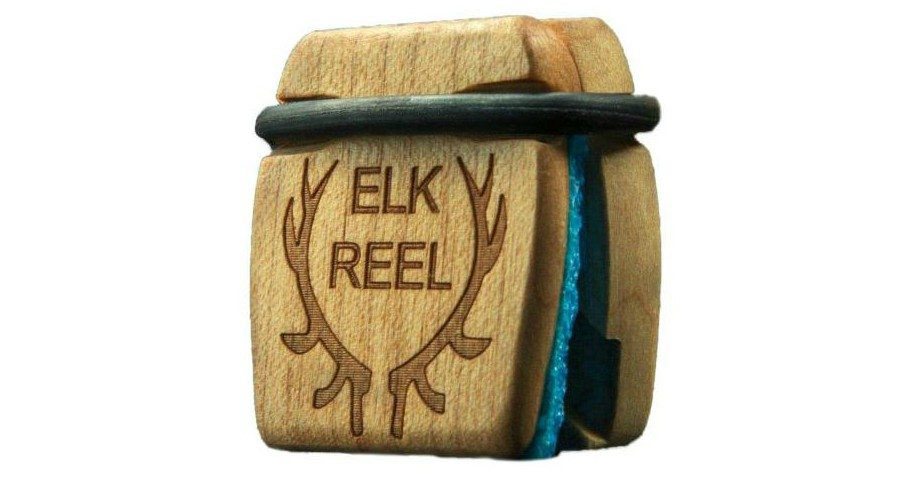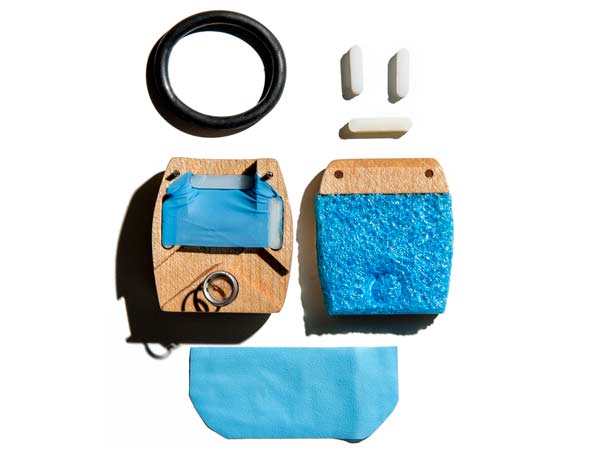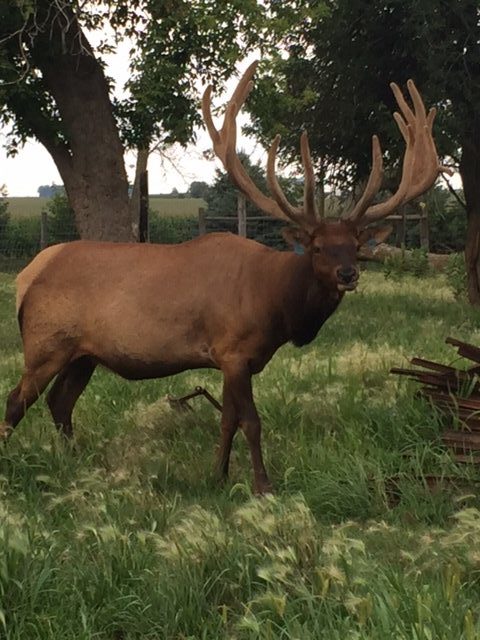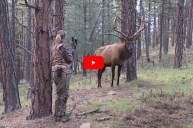Can something as easy to use as the Elk Reel actually work?
I was skeptical, I'll admit it. Life has taught me that when something seems too good to be true, it usually is. But then I kept hearing about them, seeing them or reading something else about them. I had to see for myself. I reached out to Drew, the founder of Reel Game Calls, and shared an idea I with him.
"If your calls are so easy to use, let me try a box-opening review live on Facebook for the entire Wide Open Spaces and Tree Stand Diaries audiences to watch," I proposed.
"Sounds awesome," he said. "We'll send you some calls right away."
Two days later, I had a handful of Elk Reels in my mailbox. I grabbed the box and pulled open Facebook to launch a live video. Never having actually held one of these things in my hands before, I was impressed with their incredibly compact size. With no experimentation or practice, we immediately tried the call in an effort to produce a female elk vocalization. It only took about four attempts before I had the mechanics of the call (opening, closing, increasing or decreasing airflow) figured out and working flawlessly. That's right. In only 30 seconds, and I was making better elk vocalizations that I probably ever have in the past.
The Challenge
Confession: I suck at diaphragm calls. I'm absolutely terrible. So historically my only option was to carry multiple calls that each perform one individual vocalization—the type of sounds you get from a reed call. It's annoying, but what's a guy to do? Drew and the gang at Reel Game Calls blended the reed call's ease of use with the realism and flexibility of a diaphragm call. How'd they do that?
The calls are made of 11 small separate parts that when combined, sandwich a diaphragm call between two pieces of hardwood and foam. The user simply places the call near the mouth and blows through the device. The only two variables needed to accomplish a variety of elk vocalizations are changing the amount of airflow and the opening or closing of the end of the call.
I've found the simplest way to use the call is actually by placing it directly in my mouth. This allows for two free hands to either operate a bow or change the directional sound of the call (both of which came in handy during a recent DIY elk hunt).
Field Tests
To put these to the test, I first visited a local elk farm where I won a wager with the farmer about whether or not a group of 18 cows would even acknowledge or respond to the call. And boy, did they. The bulls at the farm had a response that was even more impressive. This all took place nearly a month before any rut activity was set to begin. That's great, Reid, but what about in the woods? Does it actually work when it counts?
The last thing the 6x5 bull elk heard before my arrow hit him was the seductive sound of the Elk Reel. I was hunting northern Colorado in late September. The elk had been abnormally quiet all week, right up until the last night when my hunting partner and I heard a bull bugle from what was well over a mile away. We played tag with the bull exchanging bugles as we got set up. The bull came in but paused just prior to entering my shooting lane. My hunting partner was able to produce a perfect cow elk call with little to no movement.
He noticed the bull immediately look in the direction that he'd attempted to place the sound. That was all it took for the bull to take the three final steps into the shooting lane, confirming for us that the Elk Reel is as legit of a call as you can get. We were no more than 60 yards from the bull when he heard that call. And he bought it, hard. Read the story of our whole hunt here.
If there's an easier-to-use, more-realistic elk call available on the market, I haven't found it. My one critique of the call is that it isn't exceptionally loud. It's certainly loud enough to be heard from a good distance, especially by an animal with such good hearing. However, when trying to locate a quiet heard of elk that isn't talking, a little more volume would be nice. When the extra volume was desired, we just called through an open bugle tube or cupped our hands around our mouths.
If you're like me and struggle with diaphragm calls, or if you simply want a durable, compact, realistic elk call, do yourself a big favor and check out the Elk Reel by Reel Game Calls.
Like what you see here? If so, click here to read more great hunting, outdoor, and shooting articles by Reid Vander Veen. Also, check out his writer page, Tree Stand Diaries, on Twitter, Facebook and Instagram.
NEXT: WORLD CLASS ELK SHOT IN... NEBRASKA CORN FIELD






